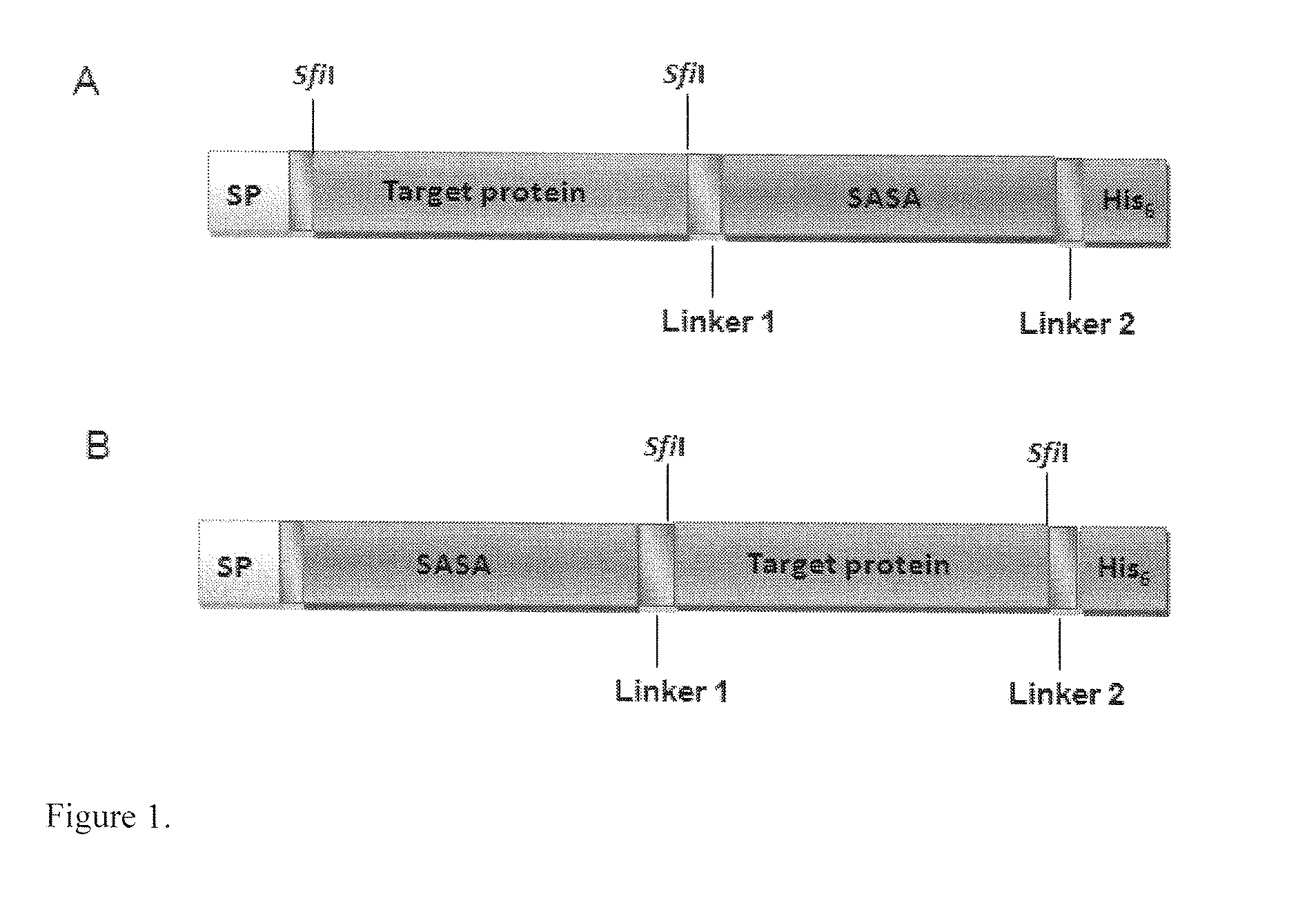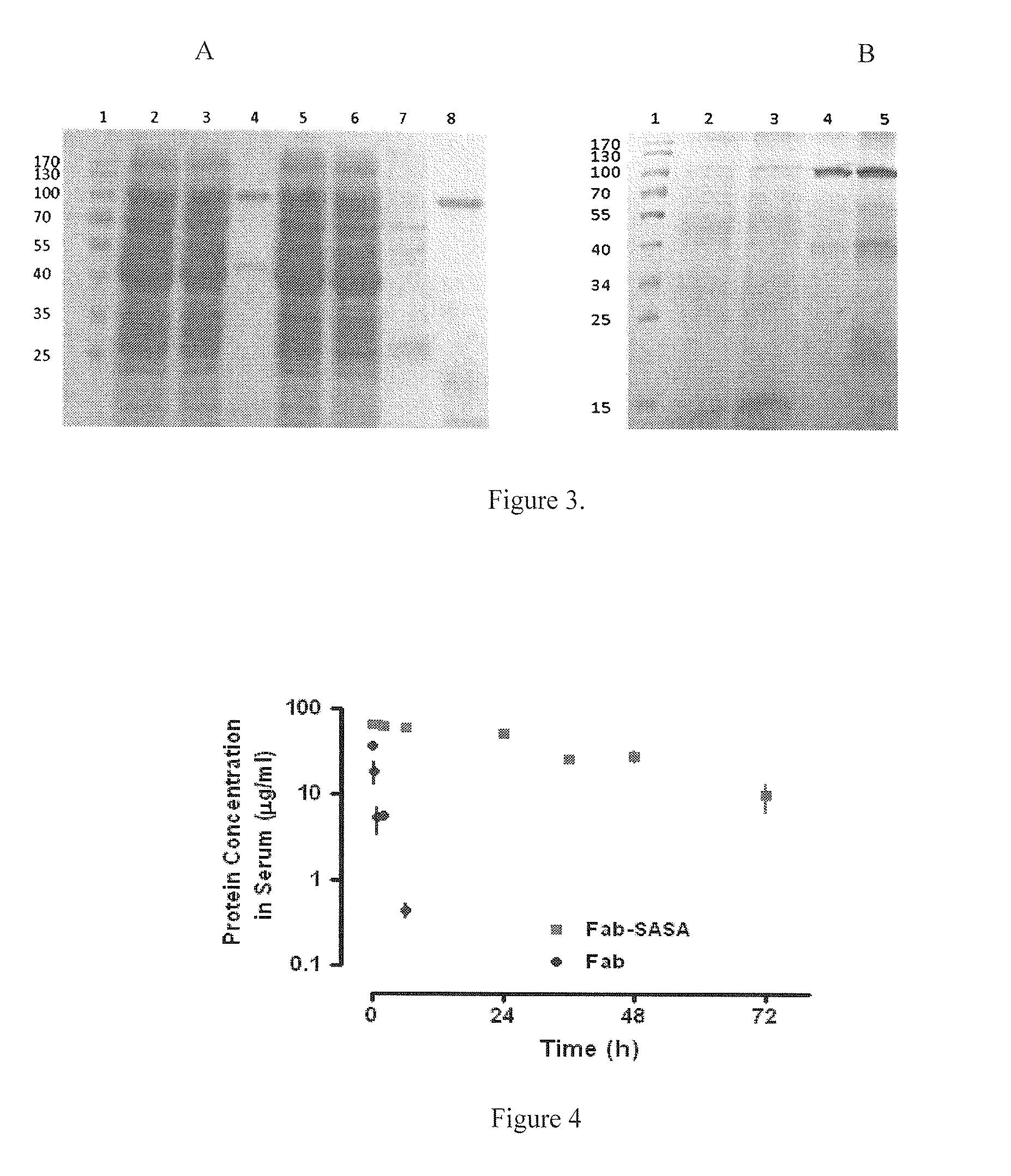Methods and systems for increasing protein stability
a protein stability and protein technology, applied in the field of methods and systems for increasing protein stability, can solve the problems of protein stability, low stability, and low purity of approach, and achieve the effect of prolonging stability and facilitating expression and purification
- Summary
- Abstract
- Description
- Claims
- Application Information
AI Technical Summary
Benefits of technology
Problems solved by technology
Method used
Image
Examples
example
[0085]Materials and Methods
[0086]Construction of Expression Vectors
[0087]pMustKey was constructed by inserting DNA encoding SASA in an E. coli expression vector pSJF2 [31] (FIG. 1).
[0088]DNA encoding 11 randomly selected Fabs (antigen-binding fragments) were PCR amplified and inserted into pMustKey vector using sfiI restriction sites on both ends of the Fab fragments. The 11 Fab genes were also inserted into pSJF2 vector, which did not include SASA. The constructs containing the coding regions of the Fabs and Fab-SASA fusions were confirmed by DNA sequence analysis.
[0089]Expression of Proteins and Protein-SASA Fusions
[0090]The expression vectors harboring each Fab and Fab-SASA fusion gene were transformed into E. coli TG1 cells. The transformed cells were grown in YT medium. Expression was induced by 1 mM IPTG followed by shaking at 30° C. for 16 hours. Subsequently, cells were harvested by centrifugation (6000 rpm, 15 min, 4° C.) and resuspended in HisTrap buffer (20 mM sodium phos...
PUM
| Property | Measurement | Unit |
|---|---|---|
| Acidity | aaaaa | aaaaa |
| Acidity | aaaaa | aaaaa |
| Biological properties | aaaaa | aaaaa |
Abstract
Description
Claims
Application Information
 Login to View More
Login to View More - R&D
- Intellectual Property
- Life Sciences
- Materials
- Tech Scout
- Unparalleled Data Quality
- Higher Quality Content
- 60% Fewer Hallucinations
Browse by: Latest US Patents, China's latest patents, Technical Efficacy Thesaurus, Application Domain, Technology Topic, Popular Technical Reports.
© 2025 PatSnap. All rights reserved.Legal|Privacy policy|Modern Slavery Act Transparency Statement|Sitemap|About US| Contact US: help@patsnap.com



